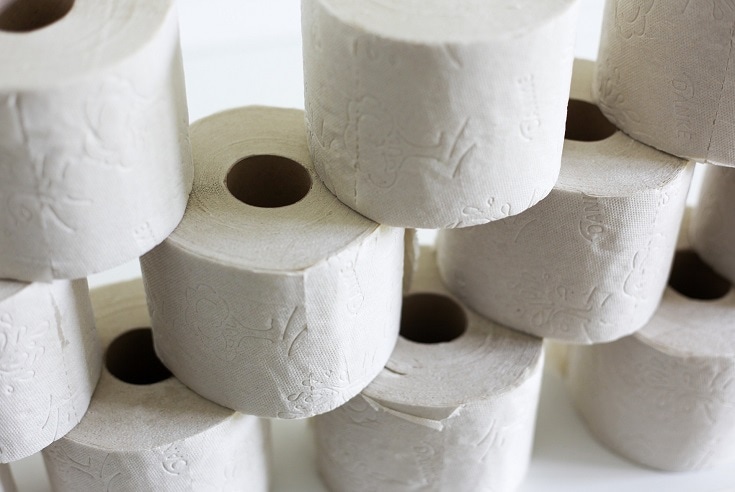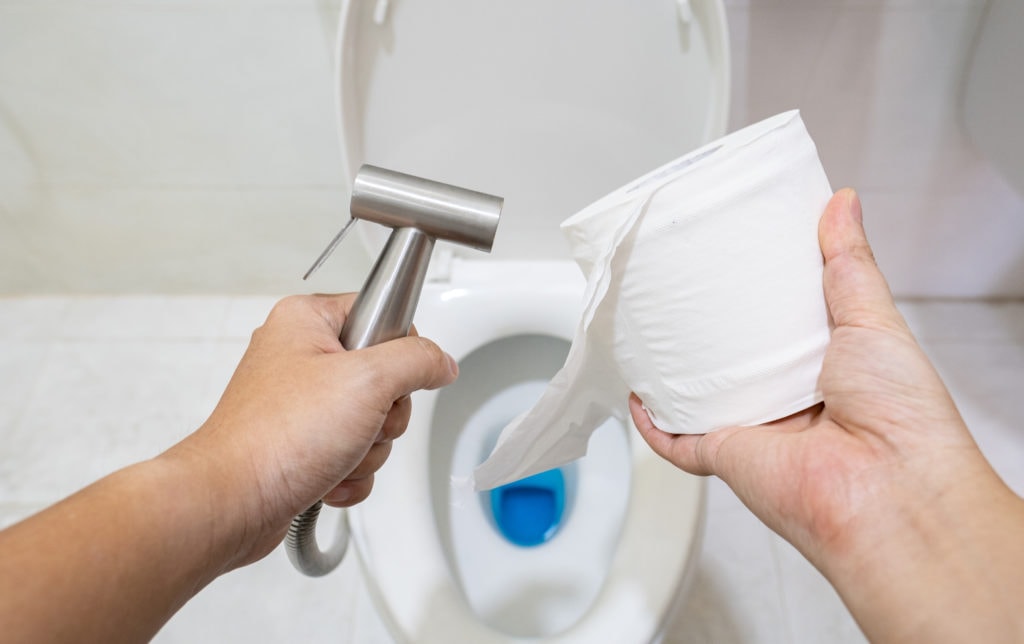Is Toilet Paper Bad for the Environment? Alternatives, Facts & FAQs
-
Pete Ortiz
- Last updated:

Toilet paper is an essential commodity that we all need to use daily, and, no matter how conservative we are with these sheets, using toilet paper has a detrimental effect on the environment.
With standard pulp toilet paper, the entire process of manufacturing the paper can be bad for the environment. From the decimation of boreal forests to high-polluting pulp mills and the huge amounts of water that are used in the production of recycled toilet paper, it is a massive drain on natural resources.
Alternatives, including more sustainable bamboo toilet paper or the use of a bidet instead of regular wiping, can all make a big difference and minimize the impact our toilet visits have on the environment.
How Is Toilet Paper Bad for The Environment?

The production of toilet paper is considered bad for the environment in a host of ways.
Overuse
US consumers use more toilet paper than any other nation. The average American uses 141 rolls of toilet paper a year, which is equivalent to roughly 30 pounds of paper. Germany and the UK are the nations with the next highest toilet paper consumption rates. Nations like Brazil and China use around a quarter of this amount.
Deforestation
Traditional toilet paper is made from virgin fiber pulp. This means that the wood has never been used for anything before, so it has not been recycled. About 28 million acres of boreal forest were logged in 20 years between 1996 and 2015 for toilet paper alone.
What’s more, in a lot of cases, the logging companies used clearcutting logging, which means that virtually all of the trees in the area were felled. It can take 100 years for the trees in the area to return to their earlier state. The process also destroys the natural habitat of millions of animals.

High-Polluting Pulp Mills
Once the pulp fiber has been gathered, it is sent to pulp mills for processing. It takes 1.5 pounds of wood and nearly 40 gallons of water to make a single toilet paper roll, so a single person’s annual toilet paper use equates to 211.5 pounds of wood and more than 5,000 gallons of water. Even recycled toilet paper has to go through similar processes, including being bleached, before it is packaged and sold.
Water Consumption
During the manufacturing process, the wood fiber is mixed with water to create a pulp. The mix has a ratio of 99.5% water to 0.5% fiber, which is why so much water is used in the process. Nearly 800 million people do not have access to basic water facilities. Cutting down on toilet paper use could help provide water to more people.
Eco-Friendly Toilet Paper Alternatives
Obviously, people can’t simply stop using toilet paper altogether. Viable and functional alternatives do exist, though, and many of them are better for the environment.
Bidet
A bidet uses water to clean sensitive areas and then disposes of the waste via the home’s waste system. Surprisingly, considering a bidet is a water-based solution, it uses considerably less water than toilet paper.
A person would be able to enjoy nearly 300 uses of a bidet for the equivalent of 37 gallons of water that it takes to make a single roll of toilet paper. A consumer uses an average of 8 pieces of toilet paper per bathroom visit, and an average toilet roll consists of 150 sheets per roll, so 37 gallons of water is only enough for 19 bathroom visits.
Therefore, a bidet uses approximately 1/15th of the amount of water as toilet paper. It also saves the consumer money. A bidet costs approximately $100 to install, while the average consumer spends $150 a year on toilet paper.

Bamboo Toilet Paper
Bamboo grows more quickly and uses less water. It is thicker than paper fiber, too, and it is biodegradable and perfectly safe for use in septic systems. Although the cost is a little more than standard toilet paper, it is much better for the environment and the world’s fastest-growing plant, meaning it is considered an environmentally sustainable material.
When toilet paper ran short at the start of the Coronavirus pandemic, bamboo paper became much more prominent, so it is easier to get hold of now, and costs are likely to fall as more and more people buy it.
Recycled Toilet Paper
Recycled toilet paper undergoes many of the same processes as virgin fiber toilet paper, but it does at least use recycled fiber. It is more environmentally friendly than virgin fiber and represents a better alternative.
Conclusion
Most of us use toilet paper without really thinking about the environmental impact it has. However, toilet paper consumption is responsible for the deforestation of millions of acres. Its production uses vast volumes of water, which could be better used by providing water facilities to those that need it globally. Alternatives, including bidets and bamboo toilet paper, do exist for those who want to do their fair share for the environment.
- https://www.statista.com/chart/15676/cmo-toilet-paper-consumption/
- https://www.cdc.gov/healthywater/global/wash_statistics.htmlhttps://trueplumbers.com/blog/do-you-use-more-toilet-paper-than-the-average-person
- http://www.toiletpaperhistory.net/toilet-paper-facts/toilet-paper-fun-facts/https://hellotushy.com/blogs/the-posterior/toilet-paper-bad-for-the-environment
Featured Image Credit: Jasmin_Sessler, pixabay
Contents


